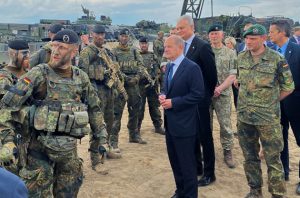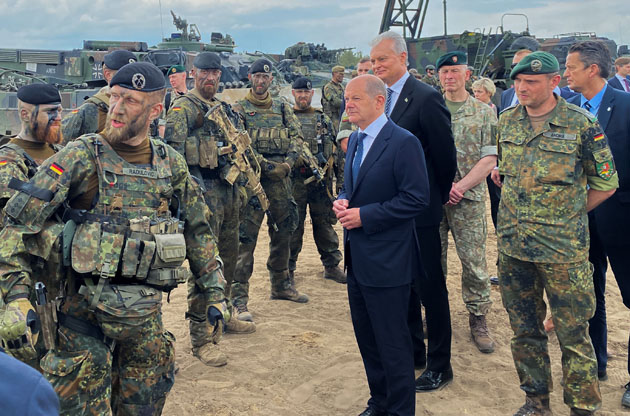Germany is ready to deploy more troops to Lithuania, Chancellor Olaf Scholz said during a visit on Tuesday in response to repeated requests from the Baltics ahead of a NATO summit.
Even before Russia’s invasion of Ukraine, Germany, which heads up a NATO battle group in Lithuania, had increased the size of its deployment from 550 to 1,000 soldiers.
The formerly Soviet-ruled Baltic states of Estonia, Latvia and Lithuania, which are all now EU and NATO members, are worried they could be next if Russia defeats Ukraine.
Since the start of the conflict, they have asked for more NATO troops and the creation of brigades to replace the current units.
“We are ready to strengthen our commitment and develop it towards a robust combat brigade that can operate both as a deterrent and defend against an aggression,” Scholz said, alongside three Baltic leaders. Brigades usually have around 4,000 soldiers.

“What is important for us, too, is that we discuss how we respond to the Russian attack by doing everything to make sure Russia cannot win this war,” he said.
Lithuanian President Gitanas Nauseda said: “I believe that no one has any illusions about Russia now. We must realise that the Russian threat will not go away.
“There can be no dialogue or cooperation nor appeasement to this nation which continues to cherish it’s imperial ambitions,” he said.
Estonian Prime Minister Kaja Kallas said: “We need to make it clear to the aggressor that NATO has not only the will but also the ability to defend every centimetre of its territory.”
NATO has strengthened its eastern flank in recent years, particularly since Russia’s annexation of Crimea in 2014.
In 2017, four multi-national battle groups were deployed to the three Baltic states and Poland.
Following the start of the Russian invasion in late February, NATO has decided to set up four new battle groups in Bulgaria, Hungary, Romania and Slovakia.
The NATO summit will take place in Madrid on June 29-30


